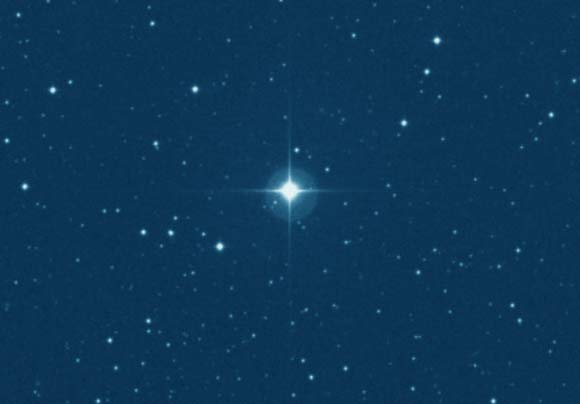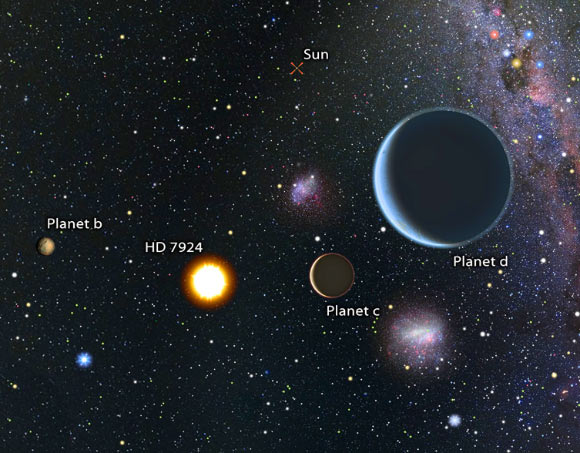A team of astronomers using three ground-based telescopes in the United States has discovered two super-Earths around a nearby star known as HD 7924.
HD 7924 is a 7th magnitude K-dwarf star, with a radius of around 78 percent that of the Sun. It is located in the constellation Cassiopeia, roughly 54 light-years away.
Astronomers already knew that there was at least one exoplanet orbiting this star: they discovered HD 7924b – a super-Earth with a mass 9.2 times that of Earth and an orbital period of 5.4 days – in 2009.
But now new observations from the Automated Planet Finder Telescope at Lick Observatory in California, the W. M. Keck Observatory on Maunakea, Hawaiʻi and the Automatic Photometric Telescope at Fairborn Observatory in Arizona, have shown that there are at least three exoplanets orbiting HD 7924.
These additional exoplanets – HD 7924 c and d – have masses of 7.9 and 6.4 times that of Earth, and orbital periods of 15.3 and 24.5 days.
The astronomers discovered them by detecting the wobble of HD 7924 as the planets orbited and pulled on the star gravitationally.
The Automated Planet Finder (APF) and the Keck Observatory traced out the planets’ orbits over many years using the Doppler technique. The Automatic Photometric Telescope made crucial measurements of the HD 7924’s brightness to assure the validity of the planet discoveries.

This image shows the nearby star HD 7924. Image credit: Centre de Données astronomiques de Strasbourg / SIMBAD.
“The new APF facility offers a way to speed up the planet search. Planets can be discovered and their orbits traced much more quickly because APF is a dedicated facility that robotically searches for planets every clear night,” said team member Lauren Weiss of the University of California, Berkeley.
“We initially used APF like a regular telescope, staying up all night searching star to star. But the idea of letting a computer take the graveyard shift was more appealing after months of little sleep. So we wrote software to replace ourselves with a robot,” added team leader Benjamin Fulton of the University of Hawaiʻi.
In honor of the donations of Gloria and Ken Levy that helped facilitate the construction of a spectrograph on the APF and supported Lauren Weiss, the astronomers has informally named the HD 7924 system the ‘Levy Planetary System.’
The paper presenting the discovery of HD 7924 c and d has been accepted for publication in the Astrophysical Journal (arXiv.org preprint).
_____
Benjamin J. Fulton et al. 2015. Three Super-Earths Orbiting HD 7924. ApJ, accepted for publication; arXiv: 1504.06629








